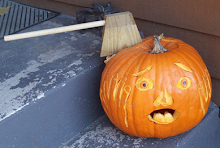Nick and Kevins are college kids who grew up together and spent a lot of time in the woods. Nick learned how to build a fire from his dad (me), and then experimented, along with Kevin, with building the best, most sure fire campfire they could make. This post is to share their nowledge, which could save you embarassment at the campground, or even save your life if are stranded in the wilderness.
The first thing you will need to
 do is gather fuel. If it has been raining, standing dead trees and shrubs are usually drier than downed wood. Some of the best fire starter is birch bark. Birch trees have trunks that look like they are wrapped with white or yellow paper. Don't peel the bark from live trees (except maybe in a real emergency). If there are live birch trees around, there are most likely dead ones to harvest the bark from. Birch bark is rich in resin, which burns almost like gasoline. Even if the outer layer is wet, the inner layers would probably be dry. Gather several handsfull of birch bark and store it in a dry place. Large sheets of birch bark can be used as a covering to keep rain off your fuel.
do is gather fuel. If it has been raining, standing dead trees and shrubs are usually drier than downed wood. Some of the best fire starter is birch bark. Birch trees have trunks that look like they are wrapped with white or yellow paper. Don't peel the bark from live trees (except maybe in a real emergency). If there are live birch trees around, there are most likely dead ones to harvest the bark from. Birch bark is rich in resin, which burns almost like gasoline. Even if the outer layer is wet, the inner layers would probably be dry. Gather several handsfull of birch bark and store it in a dry place. Large sheets of birch bark can be used as a covering to keep rain off your fuel.If birch bark is not available, dry pine needles work almost as well as a fire starter, but you will need a few more handsfull. Cattail fluff or the inner bark of many dead trees will also work in a pinch.
Next, gather very small dead twigs, again several large handsfull. Place them in a dry area. Then gather an arm load of small dead branches, about as big around as fingers. Then gather several arm loads of larger sticks, up to wrist size. Finally, gather a good pile of logs. You want to make sure you have enough fuel so the fire doesn't go out when you leave to gather more. Again, keep everything as dry as you can, especially if it is raining or snowing.

To build the fire, make a base of sticks or logs close together and sheltered from the wind to build the fire on.

Then break some of the finger size branches into about 20 sticks the length of your hand. Make a log cabin about 4 inches square and 3 rows high on the base of sticks.

Then break some of the finger size branches into about 20 sticks the length of your hand. Make a log cabin about 4 inches square and 3 rows high on the base of sticks.

Next, take some of the birch bark and shred it into small strips, and peel the strips so they are only one or two layers thick. Fill the middle of the cabin with the sh redded bark.
redded bark.
 redded bark.
redded bark.Then break up some of the smallest twigs about finger length and mix them in with the birch bark. Make a loose layer of these twigs on top of the bark.

Next, add more layers to the log cabin, about 5 layers high. Break up larger sticks and loosely fill the top of the log cabin.

Make a platform on top of the cabin with two layers of sticks.

Build a teepee of larger sticks around the cabin, leaving enough space to reach inside with a match.
We had been camping and it rained all night. We gathered fuel for the campfire the next morning. All the wood, including the sticks and birch bark, were wet or damp. The three bottom photos show lighting the wet campfire without using gasoline, lighter fluid, or any other accelerant. It was lit with one match. The time from lighting the match to the third photo was about two minutes. At this point you can start adding larger logs.




No comments:
Post a Comment